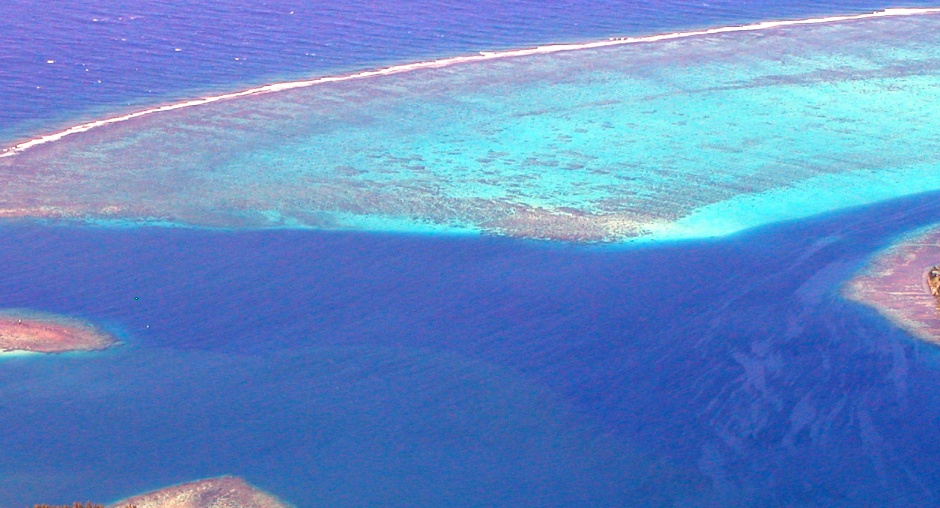
The Moorea Coral Reef LTER site became the 26th node in the U.S. Long-Term Ecological Research (LTER) program in September of 2004. The Moorea Coral Reef LTER site encompasses the coral reef complex that surrounds the island of Moorea, French Polynesia (17°30'S, 149°50'W). Moorea is a small, triangular volcanic island 20 km west of Tahiti in the Society Islands of French Polynesia.
Ideal Research Setting
The coastal environments of Moorea offer an unparalleled opportunity for studies of coral reef ecosystems. An offshore barrier reef forms a system of shallow (mean depth ~ 5-7 m), narrow (~ 0.8-1.5 km wide) lagoons around the 60 km perimeter of Moorea. All major coral reef types (e.g., fringing reef, lagoon patch reefs, back reef, barrier reef and fore reef) are present and accessible by small boat. Prior to 2008, the reefs were in excellent condition and had been subjected to relatively few natural disturbances during the last several decades. An outbreak of the Crown-of-Thorns seastar (Acanthaster planci) that began in 2007 and a near miss by tropical cyclone Oli in early 2010 significantly reduced the cover of live coral in many fore reef locations, though coral mortality occurred to differing degrees around the island. This “natural experiment” provides MCR scientists with an unparalleled opportunity to study the processes that influence the recovery of coral reefs from the effects of large disturbances.
The rich research opportunities afforded by the reefs of Moorea are greatly facilitated by the infrastructure and the ease with which field research can be conducted. The field portion of the Moorea Coral Reef LTER is staged from the Richard B. Gump South Pacific Research Station on Cooks Bay on the north shore of Moorea, which has been operated by the University of California since the early 1980's. Station facilities include several laboratory buildings, a flow-through sea water system, a dock, launch ramp, a fleet of small boats and vehicles, a SCUBA compressor and dive lockers. Station housing includes a dormitory and several bungalows. The Gump station has a permanent staff including a director, two associate directors, administrative assistant, maintenance personnel, groundskeepers and housekeepers.



